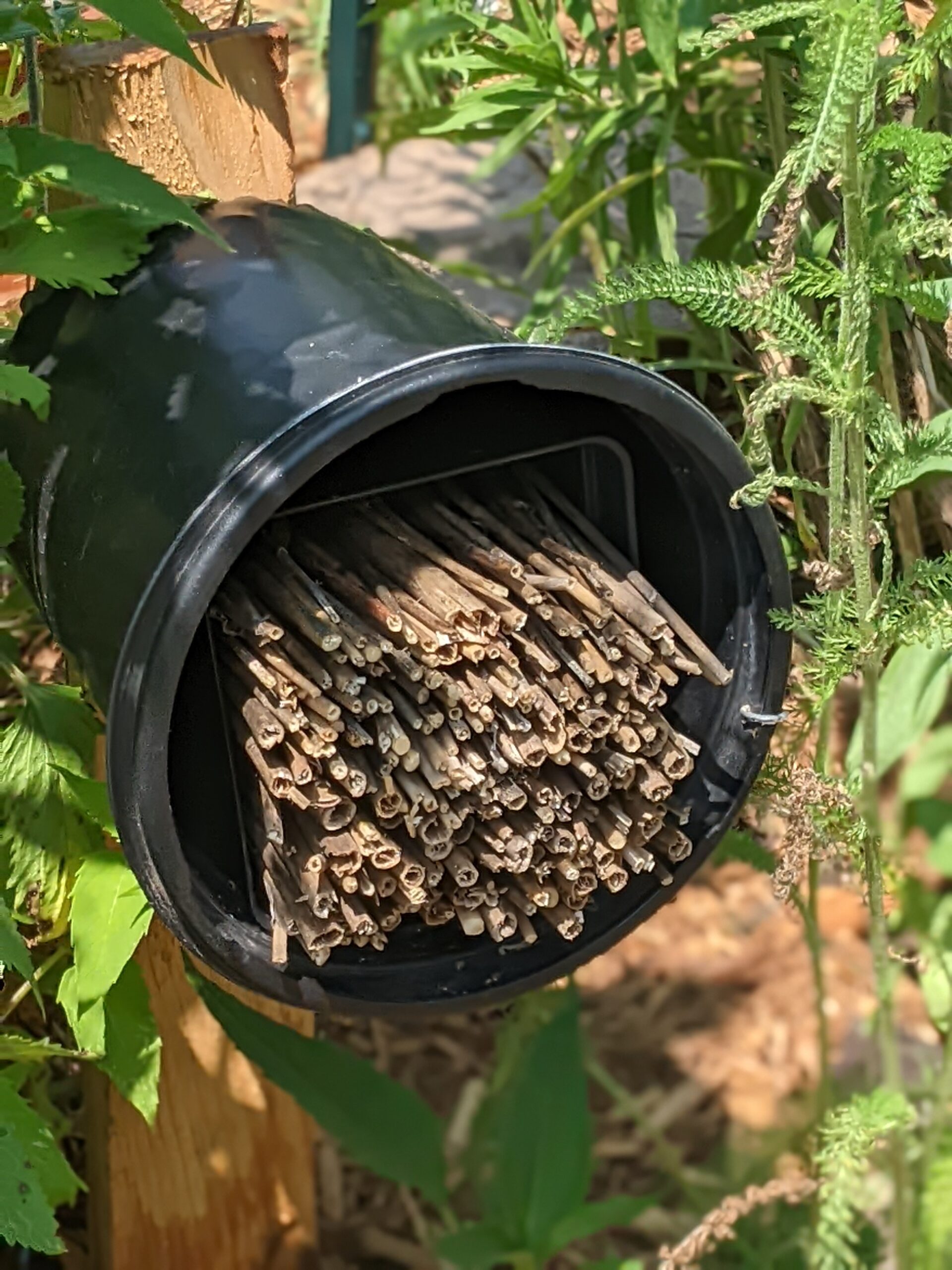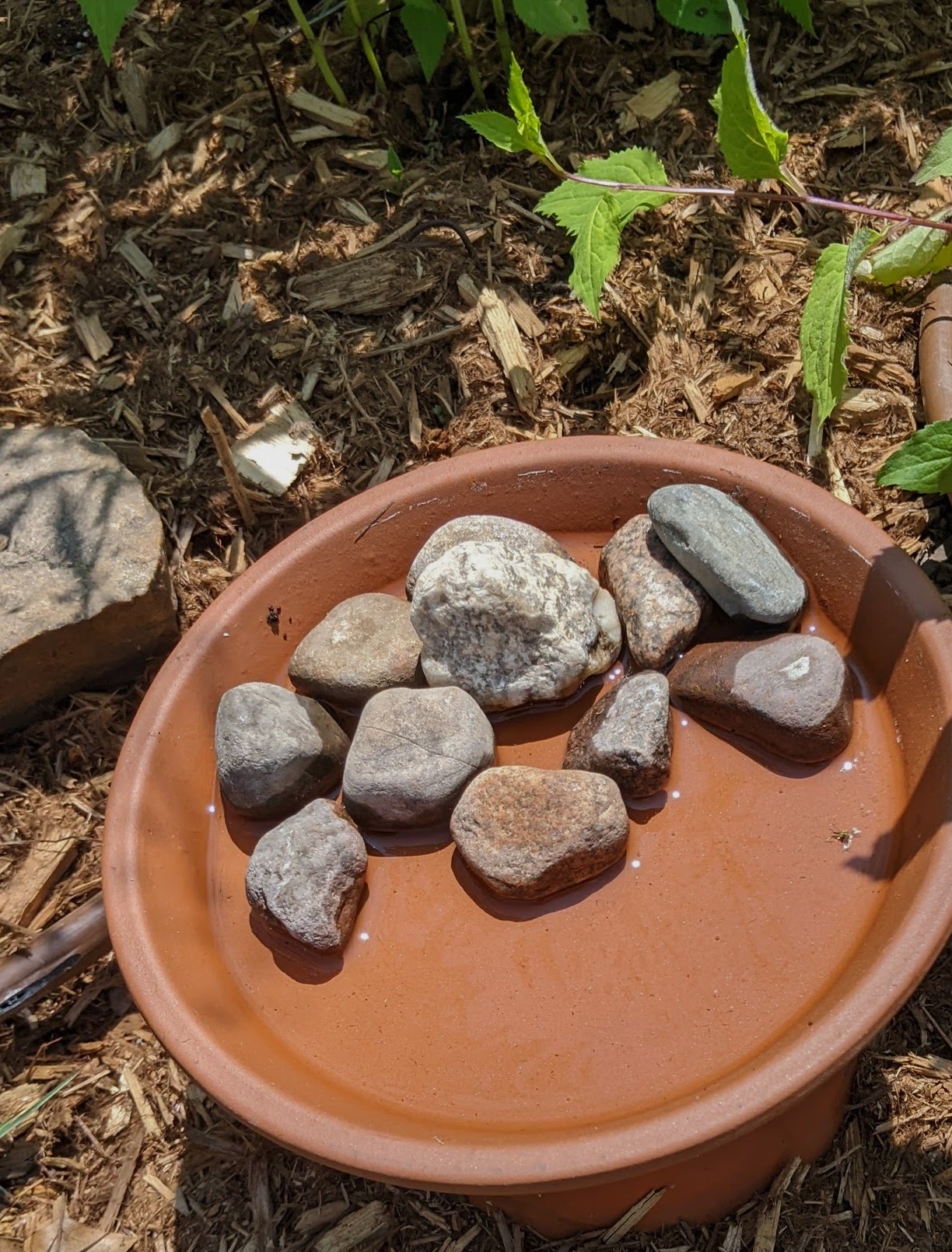Pollinator Garden



Some Pollinator Garden features and recommendations to consider: Plant a variety of flowers that bloom throughout the season to provide pollen and nectar to pollinators, as well as plants that support their larvae. Native plants are always a good option.
Plant densely so that pollinators have protection from predators, wind and cool days. Include clumps of native grasses like little bluestem to provide pollinator habitat. Add a layer of natural mulch such as shredded cedar to provide nutrients, to help keep weeds down and to help retain moisture. Avoid dyed mulch and mulch with big chunks. Don’t mulch right up to a plant; leave a little space to allow air to circulate.
Place rocks in sunny areas where pollinators can rest and warm up when the weather is cool. Add a pollinator water station. Pollinators need water for many purposes including drinking, reproduction and cooling. A flowerpot turned upside down can serve as a sturdy base. Place the saucer of the flowerpot on top of this base, fill with water and add some rocks to give pollinators a place to land and safely access the water. Clean the station and change the water often.
Provide habitat for stem-nesting bees by placing a variety of dry, 8-24 inch long hollow or pithy stems of dead plants with different size openings – like Joe-Pye weed, wild bergamot and rose milkweed – in containers such as an empty plastic flowerpot and attach to a post or fence.
Never use chemical herbicides or pesticides as these can harm or kill pollinators and other beneficial insects.
Plant list
A Xerces Society sign
B fireweed – Chamaenerion angustifolium
D catmint – Nepeta spp
E rattlesnake master – Eryngium yuccifolium
F zinnia – Zinnia elegans
G dense blazing star – Liatrus spicata
H white turtlehead – Chelone giabra
I large leaf aster – Aster macrophyllus
J hummingbird feeder
K common yarrow – Achillea millefolium
L creeping stonecrop – Phedimus spuriius
M lanceleaf figwort – Scrophularia lanceolata
N scarlet bee balm – Mondara spp.
O wild bergamot – monarda fistulosa
P purple coneflower – Echinacea purpurea
Q Pollinator watering station
R little bluestem – Schizachyrium scoparium
S Joe Pye weed – Eutrochium purpureum
T black eyed susan – Rudibeckia hirta
U New England aster – Symphyotrichum novae-anglia
W Stem nesting bee habitat
X Pollinator resting rock
Y heart-leaf golden-alexanders – Zizia apertera
Z rigid goldenrod – Solidago rigida
ZZ Undisturbed soil for ground nesting native bees
ZZZ side-oats grama – Bouteloua curtipendula
Garden map









